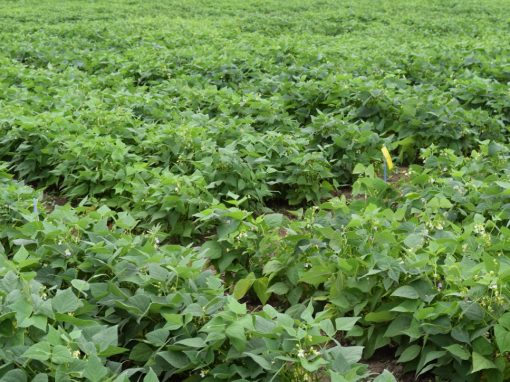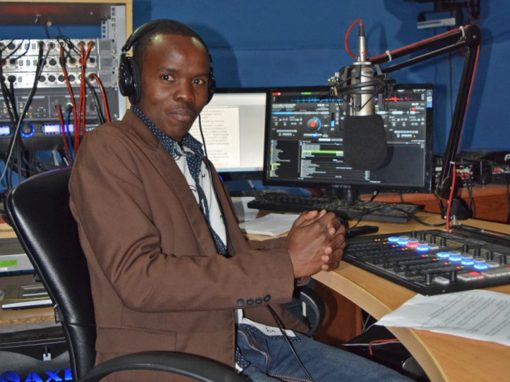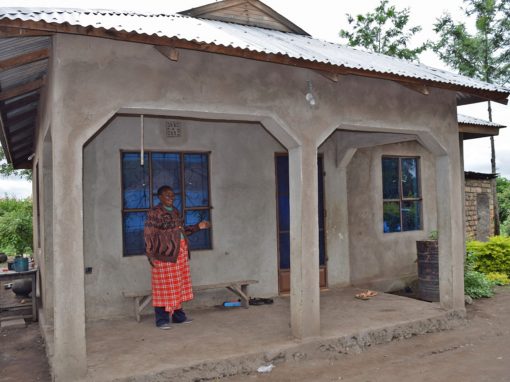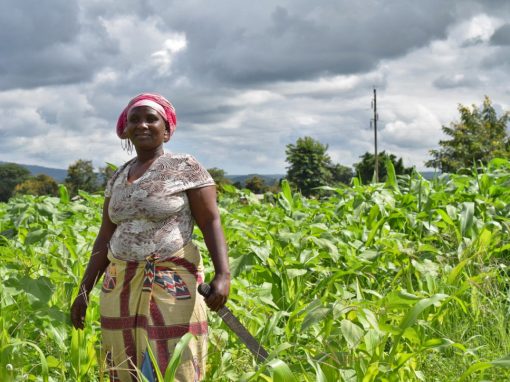Looking ahead: To bean or not to bean
Foreign donors like the Canadian and American governments agree that Tanzania has incredible potential for growth, but before that potential can be tapped, there are massive obstacles that must be overcome.
The impact of Canadian funding to bean projects in Tanzania is more than a question or whether or not it is working, but rather whether it is working on a large enough scale. There are clear improvements in the lives of farmers who implement proper agronomic practices and use improved seeds, but even with larger-scale dissemination projects, most involved acknowledge that the Pan-African Bean Research Alliance (PABRA) is not reaching enough farmers.
And what progress there is is not happening fast enough to keep up with the changing market and climate.
Kimberly Flowers is the director of the global food security project at the Center for Strategic and International Studies in Washington, D.C. She is a former strategic communications officer and contractor for the United States Agency for International Development (USAID), and is now tasked with reviewing the American Government’s Feed the Future project, its initiative to combat global hunger and poverty.
The first Feed the Future country Flowers chose to review was Tanzania, and she published her findings in a March 2016 report called Tracking Promises: Analyzing the Impact of Feed the Future Investments in Tanzania.
“East Africa is a hotbed of agricultural growth,” she said.
She said that when Feed the Future chose Tanzania as a country of focus, there were five criteria with which to evaluate a potential aid recipient country: level of need, opportunity for partnership, potential for agricultural growth, opportunity for regional synergy, and resource availability. Although countries were rated using rankings and not specific metrics, Flowers said Tanzania ranked high in all categories, and USAID decided to use it as an example of the potential of Feed the Future.
In 2010, then-secretary of state Hillary Rodham Clinton travelled in person to Tanzania, and Tanzania became the only Feed the Future country to date to receive an official launch.
“Those decisions aren’t made unless they’re a good political partner,” Flowers said.
Tanzania is appealing to Canada, because it’s been considered a progressive island of stability in Africa for the last 15–20 years, and it has been more peaceful and secure than its neighbours, according to GAC.
But for all the political will on both sides, the uphill battle of food security in Tanzania is a steep one.
Jean-Claude Rubyogo, the regional coordinator for PABRA, said there are more than 1,000 farmers in the northern region of Tanzania working closely with his organization, but admitted there are poor linkages between research and farmer, and farmer and exporter.
There are around two million farmers in the northern region, the vast majority of them at the small-scale subsistence level. PABRA employs only a few extension workers to attempt to reach all of them and educate them about improved seeds.
According to the Food and Agriculture Organization (FAO), in 2016, the percentage of undernourished population in Tanzania decreased by a few percentage points to 32.1 per cent, which is the lowest it’s been since 2012. However, the number of undernourished people — about 16.6 million in 2016 — is at an all-time high. More people are undernourished, but they represent a smaller percentage of the population, so there is improvement. In addition, access to better water sources has increased consistently in the last quarter century, but access to that water is still only around 55 per cent.
Rubyogo said food security is a cycle from which PABRA tries to break farmers. If they have less yield, they have less income, and it’s more difficult for them to pay for equipment and labour to plant the next round of crops.
Conversely, if they have a better yield, they make more money, and can afford to implement improved farming practices.
“It all starts with the crops,” Rubyogo said. “Crops save a chicken, a chicken saves a goat, a goat saves a cow, and a cow saves a human. All enterprises in subsistence farming are intertwined.”
The cycle needs to be broken and farmers need to raise themselves out of it, he said.
At its core, the issue for farmers is access, or lack thereof, according to Flowers. They lack extension services, inputs, finance, infrastructure, good governance, climate-smart practices, and education.
First, extension services in Tanzania are insufficient, according to the experts. Although Farm Radio International and the International Development Research Centre(IDRC) have a joint project to educate farmers about inputs and agronomic practices, they are only reaching a fraction of the population.
Of the two million farmers in the northern region, a two-and-a-half-year project between Farm Radio and the IDRC is expected to reach 100,000 people, and compared to the extension services of PABRA, Farm Radio has significantly more influence.
“Their farmers were really successful — oftentimes making four times as much as they used to — when they followed the practices,” Flowers said. “But it’s not about those farmers, it’s about the farmers that don’t have access to that.”
“The extension services are incredibly weak,” she added.
Rubyogo agreed. He said that as fluid and adaptable as the bean research may be, constantly endeavouring to keep up with climate and market changes, the technology is limited to those who know how to use it.
“Many farmers have changed their lives because of bean farming, but this is a big country,” he said. “Extension services seem to have shortcomings, because of structural issues, they don’t have resources, the linkage between extension and research is not very strong.”
Farmers also lack inputs — substances for pest control and soil fertility. As much as PABRA, Farm Radio, and the IDRC encourage their sale and implementation, inputs remain inaccessible for the majority of the farming population.
“Few farmers, either women or men, benefit from use of agricultural inputs, and there is a significant gender gap among market-oriented farmers with regard to the use of improved seeds,” states a 2014 report by the FAO.
The report goes on to say that fertilizers, pesticides, and herbicides are used in only about 10 per cent of plots.
Third, Tanzanian farmers lack finance and market access.
Rubyogo said Tanzania exports beans to East African countries like Rwanda, Burundi, Kenya, and Malawi, but not much further than that, and regardless, the vast majority of Tanzanian farmers are subsistence smallholders, and cannot afford to move their product to a local market, let alone an international one.
Only about 10 per cent of Tanzanian farmers utilize improved seeds, inputs, and agronomic practices, and most cannot afford those things, which would significantly increase their yield and bring in more money for them.
“A smallholder is not going to change their tactics unless it’s really going to create more income, and often that means investments,” Flowers said. “The incentive is always money.”
According to the FAO, increases in food security in Tanzania are not as steep as national economic gains, and farmers need access to credit and training to invest in technologies to improve yields and incomes. Subsistence farmers, its 2014 report on Tanzanian food security argues, should be trying to diversify their crops for better nutrition.
Poor infrastructure is also a major impediment to the growth and independence of farmers, Rubyogo said.
Most of Tanzania’s roads are unpaved — about 92 per cent according to the CIA World Factbook — so it is very difficult for farmers to get their product to market. In addition, as previously mentioned, those who do get their product to market are doing so locally, as opposed to exporting, and there are very few companies or groups of farmers cultivating on a larger scale.
Next is the issue of governance.
As mentioned, the political will is there among both Canadian and Tanzanian leaders to make real progress, but there are complications at the regional and ward level.
“African leaders really got that agricultural development is going to pull people out of poverty,” Flowers said.
But, as Rubyogo pointed out, “local government authorities are the ones working closely with farmers,” and on that level there are questions about the efficient use of funding.
Local governments have high levels of government corruption and high mistrust of authority on the part of citizens.
Flowers said there is also disorganization on the ground in Tanzania amongst food security organizations. She said there is a lot of cohesiveness amongst aid workers in the fields of education and nutrition, but not as much in the agricultural sector, so the impact of those organizations is not at the level it could be.
In addition to systemic obstacles, farmers in Tanzania are also at the mercy of a volatile and worsening climate. The country is currently in a state of drought, the rain seasons have either not come or they’ve been cut short, and farmers are losing the crops they rely on to survive.
“In the end you should find genotypes which have resistance to certain traits,” said Papias Binagwa, the national lead scientist for the bean research program at the Tanzania Ministry of Agriculture. “You can breed for certain diseases, but unfortunately the rest is dependent on the climate, therefore it is difficult to predict.”
Fortunately, the situation in Tanzania is not as severe as in other African countries, for example Somalia and Nigeria, or Ethiopia, which is experiencing the worst drought it’s had in 50 years.
“No one is really prepared, especially the countries that are doing well,” Flowers said. “Even though Tanzania is not on that list because they’re a little better prepared, it does not mean they’re not in dire conditions.”
Finally, farmers are limited by their lack of education, said Marco Rondon, an IDRC project officer.
If they do not know about the technologies and how and why to implement them, they simply cannot implement them, he said.
“First and foremost it’s them having the knowledge,” Flowers said.
However, many rural Tanzanians either speak different languages — the official languages are Swahili and English, but there are more than 20 other major languages spoken in the country, with more variance in rural areas —or they are illiterate, and as mentioned, the number of extension officers is limited.
Flowers said organizations need to find a way to encourage behavioural changes that are quite expensive for the average smallholder.
“For them to be able to invest their scarce money into something new like a drip irrigation kit, they often need to see a neighbour or somebody who’s done it first and is actually making money,” she said.
Rubyogo said aid organizations need to focus on capacity-building and support. If women specifically spend too much time on the farm, they are not able to focus on homemaking, and therefore need labour on their farms that they often cannot afford.
The United Nations General Assembly declared 2016 the year of the pulses: a calendar year with focused programming on raising awareness about the value of pulses in sustainable agriculture and nutrition, promote the benefits of pulses for food security, and encourage production of pulses worldwide. That combined with efforts of the IDRC, Farm Radio, and PABRA demonstrate that the will is there to use bean farming to raise people out of poverty and food insecurity.
But the problems go beyond the technical challenges of developing improved seeds. A lot of the challenges are systemic, like the inequities between rural and urban populations, and between women and men.
The relationship between PABRA and Canadian donors has seen many successes, but there are still challenges, especially this year with increasing global temperatures and drought in Tanzania. Despite good research and improved bean varieties, there are still roadblocks for farmers that PABRA does not address, such as market volatility and poor infrastructure.
“They’ve really seen a reduction in poverty in the areas they’ve worked,” Flowers said, but added that aid organizations are not able to work in enough areas.
“Despite strong economic growth, averaging seven per cent annually, Tanzania did not meet the first Millennium Development Goal of reducing hunger and extreme poverty by half by the end of 2015,” her Tracking Promises report states. “In the areas where Feed the Future works, more than 37 per cent of the population still lives in poverty.”
Global Affairs Canada has also come to the end of its most recent project with PABRA, and has hit a budgeting plateau stopping it from recommitting significant funds.
For every step of progress, the goalpost moves.
Click above to go back to the previous story, or click below to navigate through different chapters.





